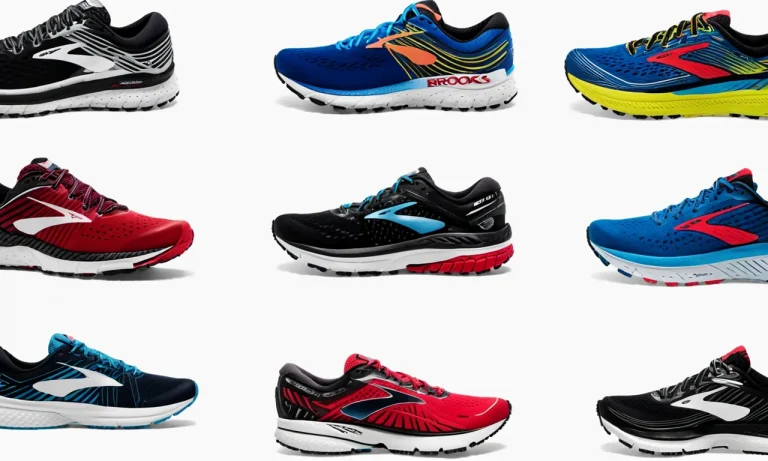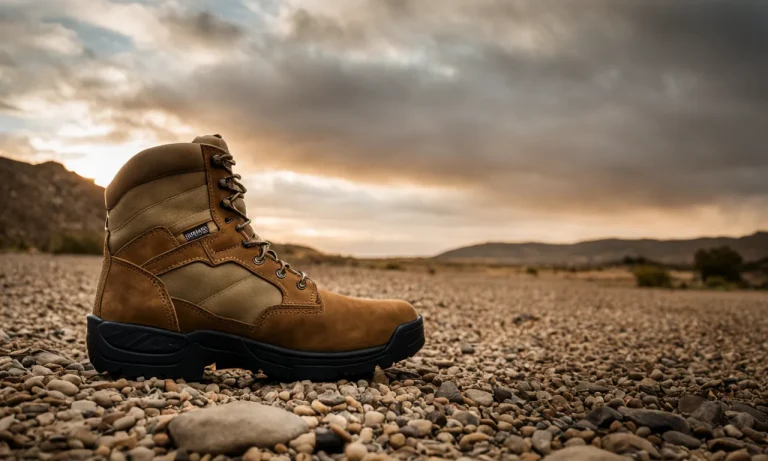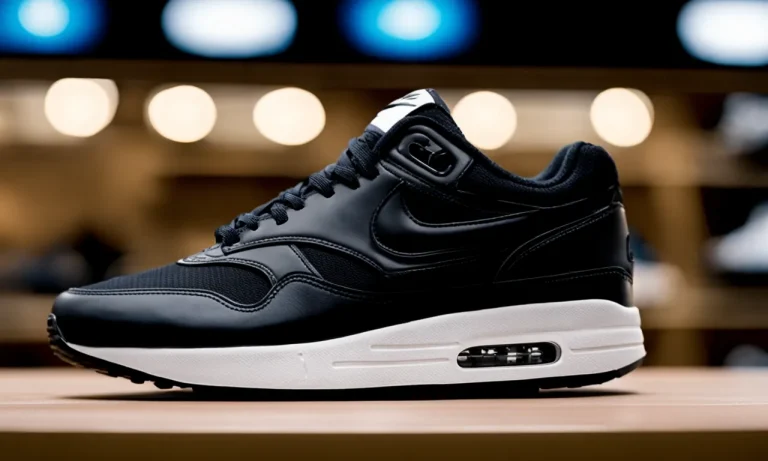If you’re an avid equestrian or horse owner, you’ve likely wondered about the frequency with which a horse’s shoes should be changed or reset. Proper hoof care is essential for a horse’s comfort and performance.
If you’re short on time, here’s a quick answer to your question: Most horses need shoeing or resetting every 4-6 weeks. The exact timing depends on factors like the horse’s hoof growth rate, workload and riding surface.
In this comprehensive guide, we’ll cover everything you need to know about the ideal shoeing schedule for your horse. We’ll discuss key factors like hoof growth, workload, seasonality and riding surface that impact frequency.
You’ll also learn the signs it’s time for a reset, plus tips for keeping your horse’s hooves healthy between shoeings.
Typical Shoeing Frequency
One of the most important aspects of caring for a horse is ensuring that its hooves are properly maintained. Regular shoeing is an essential part of this maintenance routine. So, how often should you shoe a horse?
While the frequency may vary depending on certain factors, the typical shoeing interval for most horses falls within the range of every 4-6 weeks.
Every 4-6 Weeks
Most equine professionals recommend scheduling a farrier visit every 4-6 weeks to shoe a horse. This timeframe allows for the hooves to grow enough to provide proper support and protection, while also preventing excessive wear.
By adhering to this shoeing schedule, horse owners can help avoid potential hoof problems and ensure the overall well-being of their equine companions.
Regular shoeing every 4-6 weeks is particularly important for horses that are actively used for riding, jumping, or any other strenuous activities. The constant impact and stress placed on their hooves can cause the shoes to wear down more quickly, making timely shoeing essential for maintaining optimal hoof health.
Factors That Influence Timing
While the general recommendation is to shoe a horse every 4-6 weeks, there are several factors that can influence the timing of shoeing. These factors include:
- The horse’s workload: Horses that are used for intense activities may require more frequent shoeing to account for the additional stress placed on their hooves.
- The horse’s hoof growth rate: Some horses naturally have faster hoof growth, which may necessitate more frequent shoeing.
- Hoof quality: Horses with weak or brittle hooves may require more frequent shoeing to prevent cracking or splitting.
It is important to consult with a professional farrier who can assess these factors and provide personalized advice on the optimal shoeing frequency for your horse.
For more information on horse hoof care and shoeing, you can visit reputable websites such as americanfarriers.com or horseshoes.com. These websites offer valuable resources and expert insights to help you make informed decisions regarding your horse’s hoof health.
Hoof Growth Rate
Understanding the growth rate of a horse’s hooves is essential in determining how often you should shoe your horse. The rate at which a horse’s hooves grow can vary depending on several factors, including their breed, diet, exercise, and overall health.
On average, a horse’s hooves grow about a quarter of an inch per month.
Quarter Inches per Month
The average growth rate of a quarter of an inch per month provides a general guideline for when you should consider shoeing your horse. However, it’s important to note that not all horses will adhere strictly to this rate. Some horses may have slower hoof growth, while others may have faster growth.
Regularly monitoring your horse’s hooves and consulting with a professional farrier can help you determine the ideal timeframe for shoeing. If you notice excessive hoof growth, it may be necessary to schedule a shoeing appointment sooner to prevent discomfort or other hoof-related issues.
Faster Growth in Summer
It’s worth noting that hoof growth tends to be faster during the summer months. This increased growth rate is believed to be influenced by factors such as improved diet, increased exercise, and optimal weather conditions.
As a result, you may need to adjust your shoeing schedule accordingly during this time of the year.
During the summer, you may find that your horse’s hooves require more frequent shoeing to ensure proper hoof health and performance. However, it’s important to consult with your farrier to determine the best course of action, as individual circumstances may vary.
Remember, every horse is unique, and there is no one-size-fits-all answer to how often you should shoe your horse. Regularly monitoring your horse’s hooves, consulting with a knowledgeable farrier, and considering factors such as growth rate and seasonal variations will help you make informed decisions to keep your horse’s hooves in optimal condition.
Workload and Riding Terrain
When it comes to determining how often you should shoe a horse, two important factors to consider are the workload and the type of terrain the horse is ridden on. Both of these factors can have a significant impact on the wear and tear that the horse’s hooves experience.
More Mileage, More Wear
One of the main factors that can determine how often a horse needs to be reshod is the amount of mileage it covers. Horses that are ridden frequently and cover long distances will naturally experience more wear and tear on their hooves.
The constant impact and friction can lead to the shoes wearing down more quickly.
For horses that are used for competitive disciplines such as endurance riding or eventing, where they cover extensive distances, it is not uncommon for them to require shoeing every four to six weeks.
This regular schedule allows for the farrier to assess the condition of the hooves and make any necessary adjustments to ensure the horse remains sound and comfortable.
On the other hand, horses that have a lighter workload, such as pleasure horses or those used for occasional trail riding, may not require shoeing as frequently. In these cases, shoeing every eight to ten weeks may be sufficient.
However, it is important to note that individual horses may have different hoof growth patterns, so it is crucial to work with a knowledgeable farrier to determine the optimal shoeing schedule for each horse.
Soft Ground Can Loosen Shoes
The type of terrain that a horse is ridden on can also influence how often it needs to be shoed. Soft or muddy ground can cause the shoes to become loose more quickly, leading to an increased risk of shoe loss or damage.
In these cases, more frequent shoeing may be necessary to ensure the horse’s hooves are properly supported and protected.
Conversely, horses that primarily ride on firm or rocky terrain may experience less wear on their shoes, allowing them to go longer between shoeing appointments. However, it is important to regularly inspect the hooves for any signs of wear, such as excessive sole or heel wear, cracks, or loose nails, regardless of the type of terrain they are ridden on.
It is always recommended to consult with a qualified farrier or equine veterinarian to determine the optimal shoeing schedule for your horse based on their workload and the terrain they are ridden on.
They will be able to assess the specific needs of your horse and provide expert advice to keep their hooves healthy and sound.
Signs It’s Time for a Reset
Regular shoeing is crucial for maintaining a horse’s hoof health and overall soundness. Knowing when it’s time to reset their shoes is important to prevent discomfort and potential injuries. Here are some signs to look out for:
Loose Shoes
One of the most obvious signs that it’s time for a reset is when the horse’s shoes become loose. Loose shoes can lead to excessive movement, which can cause discomfort and even lameness. If you notice any wobbling or shifting of the shoe, it’s important to contact a farrier to have the shoes reset as soon as possible.
Chipped Hooves
Another indication that a horse needs a shoe reset is when the hooves start to chip or crack. Chipped hooves can occur due to various factors such as uneven wear, trauma, or inadequate shoe fit. These chips can create weak spots in the hoof wall, making the horse more susceptible to further damage.
Regular shoe resets help maintain the integrity of the hooves and prevent excessive chipping.
Worn Down Heels
Worn down heels are a common issue that can occur over time. When a horse’s heels become excessively worn, it can affect their overall balance and lead to discomfort. This can happen due to the horse’s conformation, the terrain they are ridden on, or the length of time since the last shoe reset.
Regular resets help ensure that the heels are properly supported and prevent any discomfort or potential lameness.
It’s important to note that the frequency of shoe resets can vary depending on factors such as the horse’s activity level, hoof growth rate, and the type of terrain they are ridden on. Consulting with a farrier is the best way to determine the ideal shoeing schedule for your horse.
If you notice any of these signs, it’s essential to take action promptly to prevent further issues. Regular shoe resets not only ensure the horse’s comfort but also contribute to their overall hoof health and performance.
Keeping Hooves Healthy Between Shoeings
Regular Trims
Horse hooves grow continuously, so it’s important to have them trimmed regularly every 4-8 weeks even when the horse is shod. Frequent trimming helps maintain proper hoof conformation and prevents the walls from becoming too long or uneven. This takes pressure off the heels and bars of the hooves.
Trimming also removes any dead sole tissue or flares around the hooves. Well-trimmed hooves distribute the horse’s weight properly and reduce stress on its legs. Be sure to have an experienced farrier trim the hooves so they stay balanced and level.
Hoof Conditioners
Using a hoof conditioner or dressing between shoeings helps maintain good hoof health. These products moisturize the hooves and keep them from becoming brittle and dry. They also act as a barrier against infections.
Choose a hoof care product made specifically for horses. Brush it over the entire hoof wall and sole after trimming. Reapply if hooves appear cracked or flakey. Consistent use will improve durability and prevent thinning.
Some popular hoof care options are Keratex Hoof Gel and Effol Hoof Oil. Always check with your farrier for product recommendations.
Shoe Pads
Shoe pads can be glued or nailed between the hoof and shoe to provide extra cushioning and shock absorption. They prevent excessive pressure and concussion on the hoof walls and sole.
Pads are useful for horses with thin soles, sore feet, or concussion-related conditions like navicular syndrome. They can also provide temporary protection if the hooves are brittle or damaged.
Some common pad materials are:
- Leather – flexible and breathable
- Plastic – durable with more shock absorption
- Rubber – ideal for cushioning and grip
- Gel – optimal for minimizing vibration
Consult your farrier about using pads based on your horse’s needs. Proper sizing and placement are important for pads to work effectively.
Conclusion
Shoeing frequency is an important consideration for any horse owner. While 4-6 weeks is the typical timeframe, your individual horse’s needs should dictate the ideal schedule. Monitor hoof growth, workload, terrain and reset signs to ensure their shoes are reset at just the right intervals to promote hoof health.
With proper care between shoeings, your horse’s hooves and shoes will stay in great shape.






